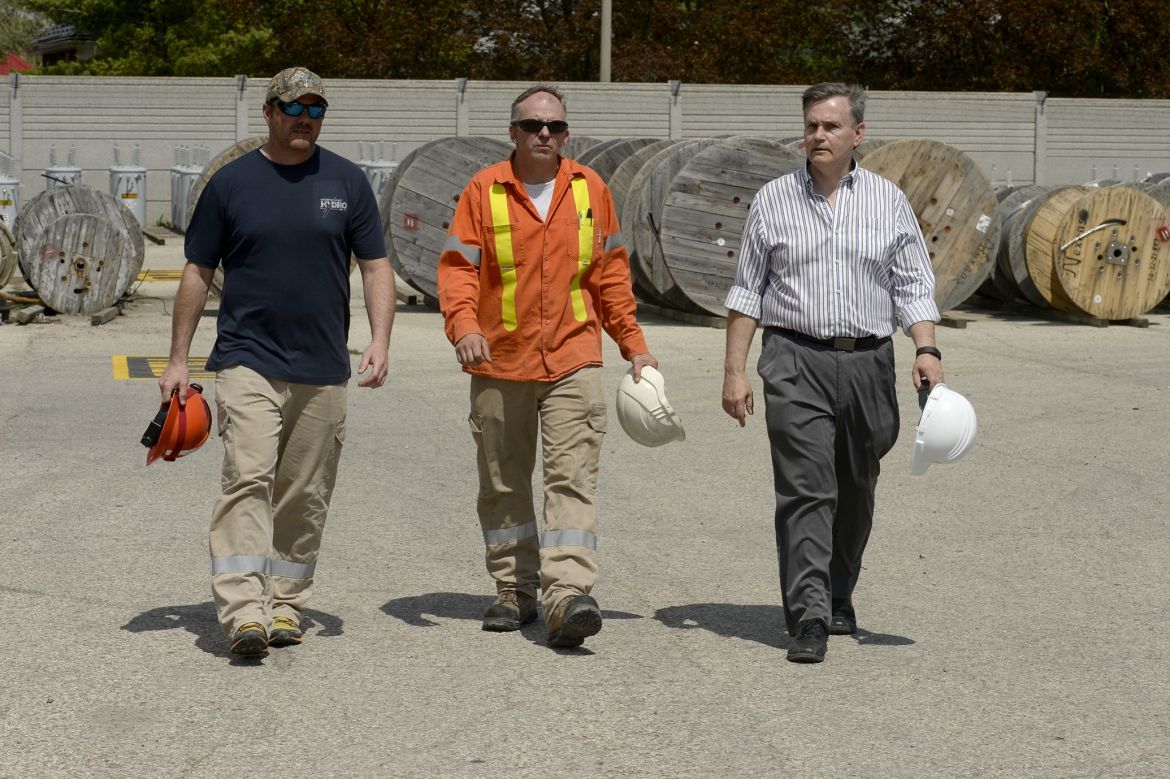In 2005, when Kitchener-Wilmot Hydro Inc. was invited to join five other utilities to take part in a research project on preventing musculoskeletal disorders (MSDs), George Minow, the manager of health, safety and wellness at Kitchener-Wilmot Hydro, didn’t have to think too long about his answer.
It was simple to say yes,
Minow told At Work, the quarterly newsletter of the Institute for Work & Health, in the fall of 2016.
At that time, soft-tissue injuries were regularly the number-one or number-two cause of injury,
Minow said, referring to the electrical utility that today employs about 180 people and serves 91,000 homes and businesses in southwestern Ontario. But in an industry where falls, burns and shocks are also common hazards, soft-tissue concerns often took a back seat.
To managers, the research project offered an opportunity to establish a group devoted to tackling MSDs. The project set out to examine the implementation of participatory ergonomics programs in small and medium-sized utilities where resources were scarce. Participatory ergonomics (PE) is an MSD prevention approach that involves active participation of employees in developing solutions and implementing change.
The research was conducted by a team from IWH, along with the Centre of Research Expertise for the Prevention of Musculoskeletal Disorders (CRE-MSD), and the Electrical & Utilities Safety Association, which has become part of the Infrastructure Health & Safety Association (IHSA).
Decade later, research-based PE program still going strong
Nearly 10 years after the project concluded, it continued to have a lasting effect: participatory ergonomics was still going strong in 2016 at Kitchener-Wilmot Hydro. We have sustained a 30-per-cent reduction in soft-tissue injuries, even with an increase of staff,
said Minow. And the severity of MSDs has decreased, as staff report symptoms earlier and so are helped faster.

At the outset of the project, the participating utilities each created an ergonomics change team made up of staff from different departments. All members of the team, called the Ergonomics Wellness Team (EWT) at Kitchener-Wilmot Hydro, received training.
They learned about soft-tissue injuries, how to fit work to the worker, how to get the most bang for the buck from an ergonomics program by making good purchases on new equipment, and how to choose cost-effective changes,
says Minow. A questionnaire completed by employees at the start of the project helped the EWT and management understand that soft-tissue concerns existed across the utility. The results said to us: You’ve got lots of work to do,
said Minow.
The ergonomics team helped bring in significant changes in how work was done at Kitchener-Wilmot Hydro. For example, job procedures were changed to reduce injury risk; ergonomics principles were applied to the purchase of new tools, as well as to the specification and customization of new trucks; and a stretching program was introduced.
Ergonomics-thinking diffused throughout workplace
Ten years later, it’s not just Ergonomic Wellness Team members who look out for and take steps to reduce MSD hazards. Having the team helped highlight the importance of ergonomics issues throughout the workforce,
said Minow. Ergonomics is now considered in all that we do, by team members and non-team members alike.
Although the team has had a near complete turnover in membership since it was created, there has never been a question of disbanding it. When an opening comes up, there’s always a lot of interest. Quite a few people volunteer to be on it,
said Minow.
What keeps it going is commitment,
he added. The team meets regularly every two months, and once a year, the team gets together with ergonomic change teams at other hydro companies to share ideas. Having things to work on also keeps the team going. You’re never really done.
Minow credited the research project many years ago for introducing participatory ergonomics to Kitchener-Wilmot Hydro. I am very happy that we joined the program,
he said, adding that it has led to the creation of a team that works well and attracts those who are interested in helping others take steps to reduce hazards. Our company has won safety and wellness awards over the years, and this team is a jewel in the organization. It’s one of the most proactive things we do.